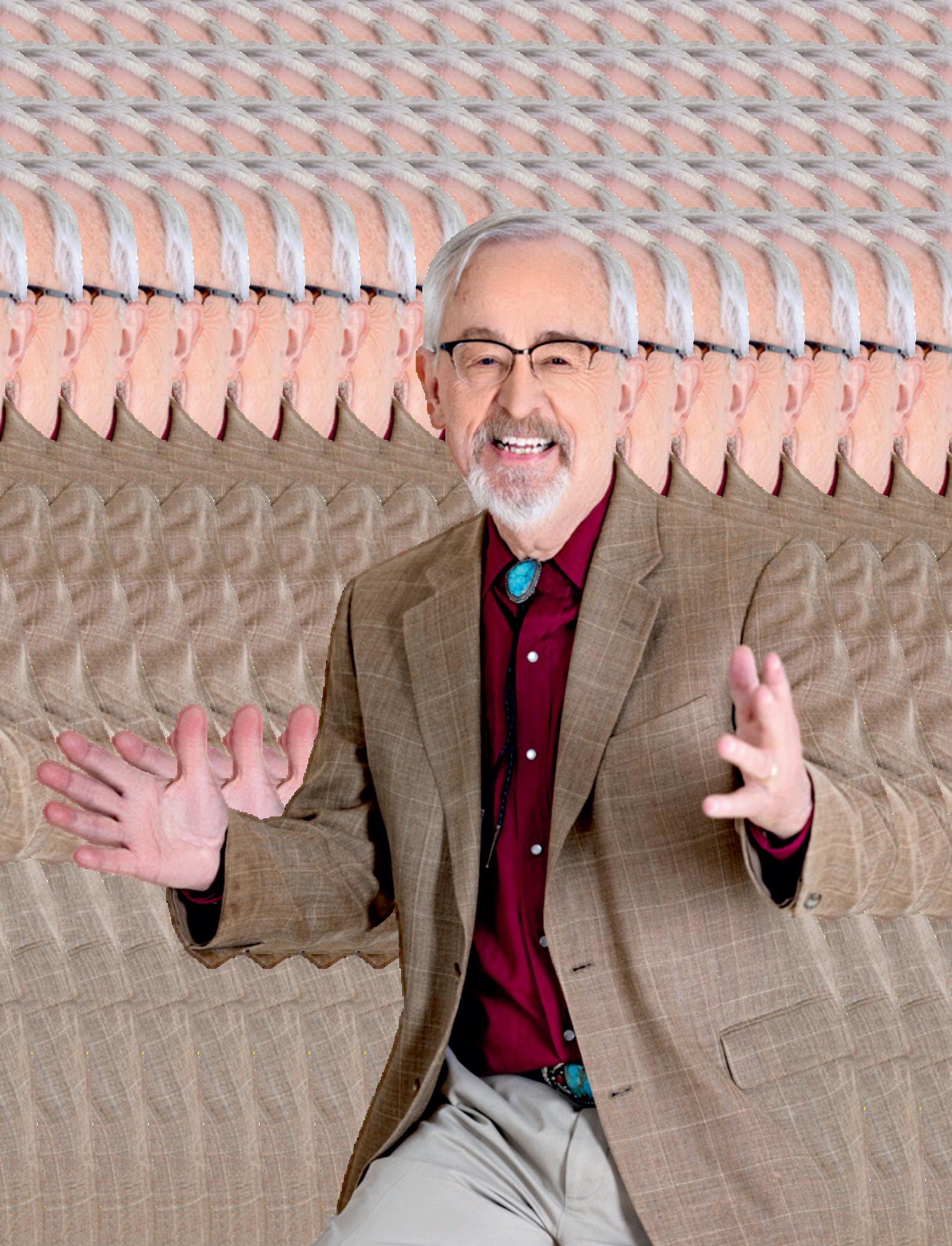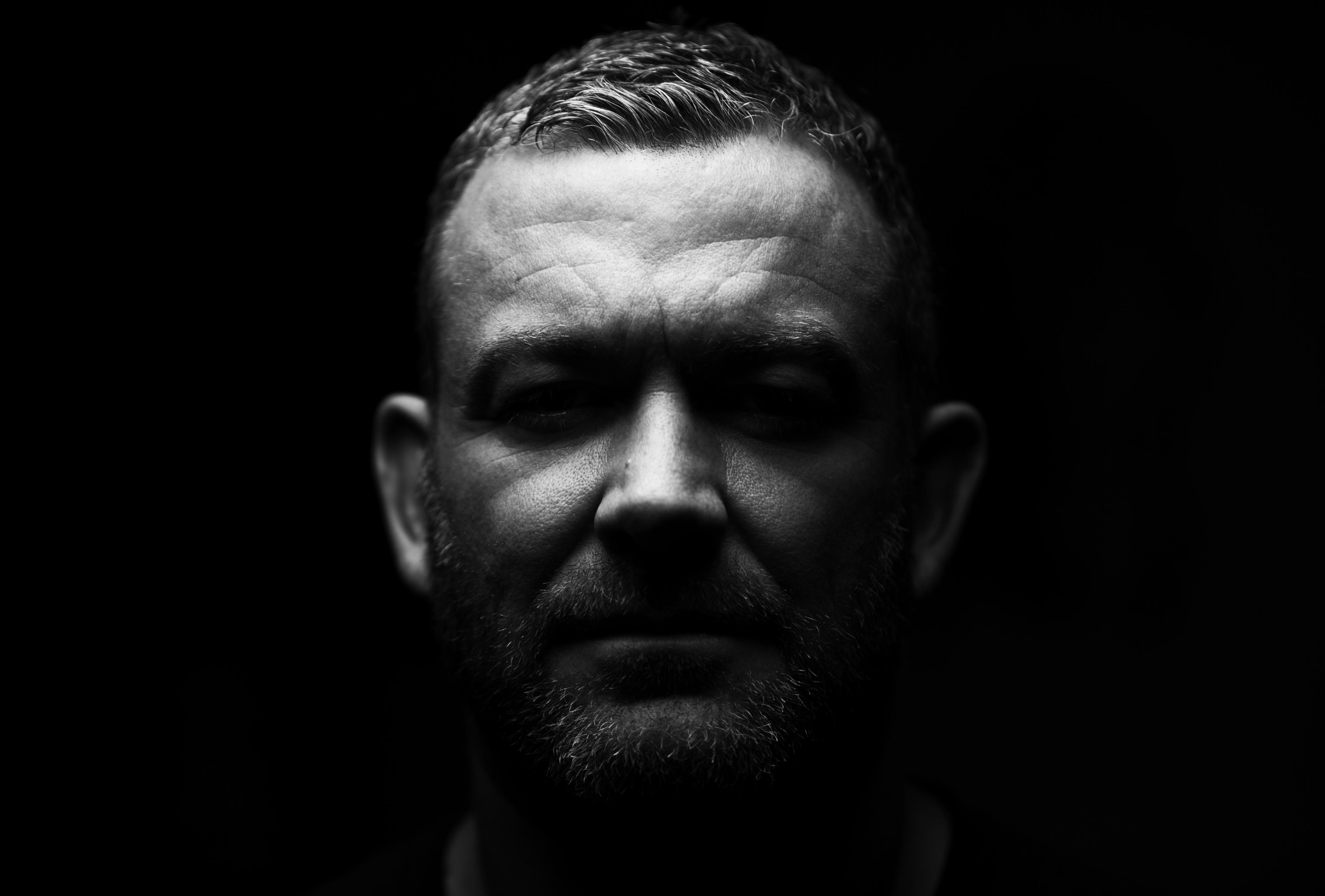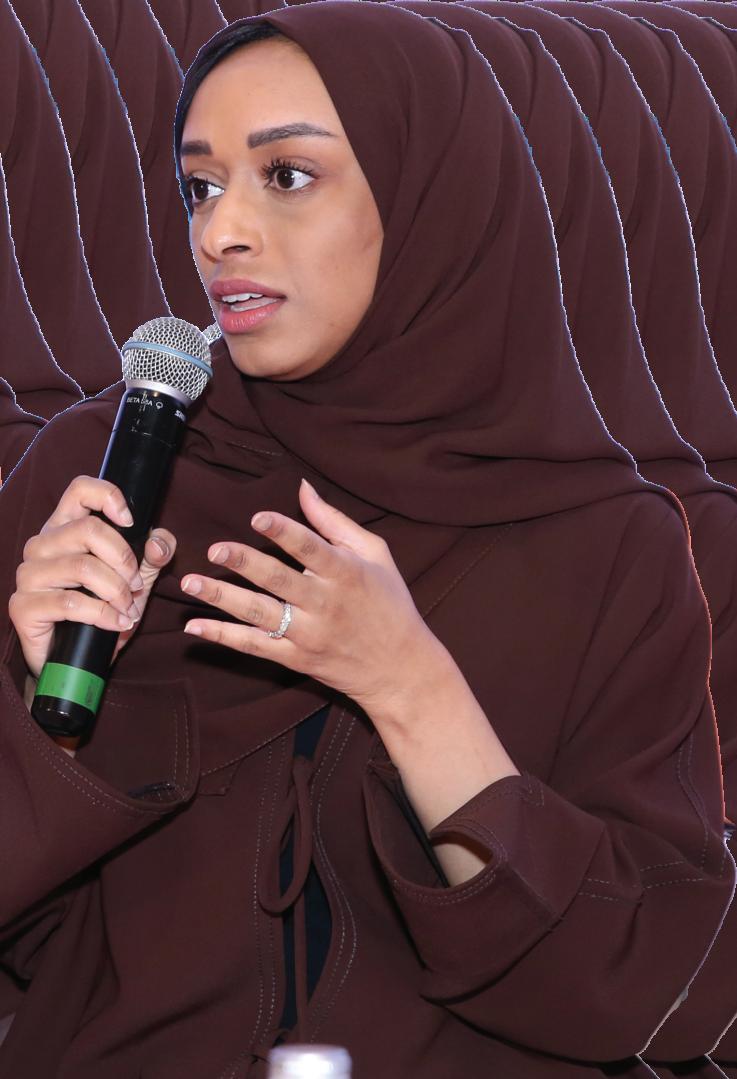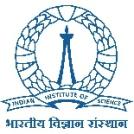

GET RECOG NISED FOR YOUR ACHIVE MENTS.







GET RECOG NISED FOR YOUR ACHIVE MENTS.





BECAUSEYOUR STORY DESERVES THE SPOTLIGHT
P e r s p e c t i v e
hroughout history, certain individuals have transcended the
boundaries of their profession to create ripples that touch countless lives. Their work is not confined to one dimension; it reaches into the minds, habits, and decisions of people far beyond the wallsofacademia,industry,orresearch.Suchindividualsdonotsimply practicetheircraft;theyrefineit,questionit,andshareitinwaysthatopen doors for others to walk through.Their stories remind us that success is rarelyastraightpath;itisablendofcuriosity,perseverance,humility,and adeepdesiretounderstandtheworldatitsmostintricatelevels.
Intheworldofideasanddiscovery,somerarethinkersblendsciencewith humanity,analysiswithempathy,andlogicwithcreativity.Theystandas living proof that the pursuit of knowledge is not only about solving problems,butalsoaboutseeingthebeautywithinthem.Theyremindus that the greatest contributions are often those that make the complex understandable, the abstract relatable, and the technical deeply human. Theirlife’sworkbecomesaguidinglight,notonlyforpeersandstudents butforanyonewillingtopauseandlearnfromtheirjourney.
This edition, Global Author Icon: Story of Success and Inspiration, celebrates such a figure, an individual whose research, teaching, and publications have shaped how people approach systems, decisionmaking,andtheverystructuresthatsupportdailylife.Theeditionisnot
just about professional milestones; it is about the mindset that sees patternswhereothersseechaos,thatteacheswithcompassion,andthat approaches every challenge as an opportunity to contribute something meaningful.
The featured personality in this issue has earned global recognition for pioneering insights in operations research and for redefining the way technical concepts are taught and applied. Over decades, his contributions have influenced public systems, educational models, and policy thinking, touching lives in unexpected ways. Beyond the professionalsphere,heiscelebratedforhishumility,hisgenuinecarefor people, and his ability to inspire curiosity in the next generation. His journey reflects a rare blend of intellectual rigor and human warmth, qualitiesthatwillcontinuetoinspirelongaftertheaccoladesfade.
Haveaninsightfulreadwitheachturningpage!


-Bill Limbert
Managing Editor: Bill Limbert
Assisting Editor : Joe Lee
Visualizer : Stewart Jonas
Art & Design Director : Robin Clarck
Sr. Graphic Designer : Authur Watson
Vice President : Jil Kendal
Asst. Vice President : Kevin Johnson
Sr. BDE : Sofia Jensen
BDE : Jennifer Peters
Technical Head : Andrea Jackson
Technical Specialist: Mike Anderson
Technical Consultant : Oliver Sutton
Research Analyst : Wendy J.
SEO Lead : Tasha L.


www.twitter.com/enterprisereview.com/ www.facebook.com/enterprisereview.com/
WE ARE ALSO AVAILABLE ON



Email sales@enterprisereview.com For Subscription www.enterprisereviewmedia.com
Copyright © 2025 enterprisereviewmedia.com, All rights reserved. The content and images used in this magazine should not be reproduced or transmitted in any form or by any means, electronic, mechanical, photocopying, recording or otherwise, without prior permission from Enterprise Review. Reprint rights remain solely with enterprisereview.
August, 2025





Professor Massachusetts Institute of Technology (MIT) Global Author Icon: Story of
Dr. Richard C. Larson




“ “ “ “
The worst thing a student can do is find the right answer too fast
The Signature Story
Few minds combined scientific brilliance, deep teaching passion, and lifelong humility like Dr. RichardC.Larson Nicknamed'Dr Queue,'Larson hasn'tjusttransformedoperationsresearch,hehashumanised it, turning some of the field's cold structure of math and systemstheoryintoapoeticstudyoflife'sflowandfriction.
As a Massachusetts Institute of Technology (MIT) professor, National Academy of Engineering member, and author of landmark studies and books, Larson has spent decades providing people with an understanding of the unseenlogicbehindsystemsthatshapetheirdailylives,from urbanpolicingandcallcentrestopublichealthinfrastructure.
Hisstoryisnotonlyaboutacademicbrilliance,butalsoabout how curiosity, self-doubt, resilience, and a love of people intersecttoshapealastinglegacy.Inthisstory,wewalkyou through the steps of Richard Larson's mindset, right from innocent boyhood inquisitiveness to shaping the arithmetic thatmakestoday'sworldgoround.

If it keeps you up at night or shows up uninvited in your thoughts, that's a clue you're on to something real. “ “ “ “
ThepathtointellectualdiscoverybeganforRichardLarsonin the public schools of Needham, Massachusetts. Many children grumbled about their arithmetic and science homework, but not young Richard. "I never, even from first grade, thought of learning science or math as work,"hesays.
"Itwasjustlearningjoy."
Thisjoyneverfaded.Still,inretirement,Larsonadherestoa thoughtful quote by physicist Albert Einstein: "Any day without learning is a day wasted." There is still the habit of getting up each morning to the challenge of discovering something new, a practice that has fueled a lifetime of continuousscholarlyinfluence.
OneoftheturningpointswashisacceptanceintoMIT Hewas thrilled and also overwhelmed Starting in privileged academiawithahumblestepwasthefirstdayofasearchto see,fromtheinside,howknowledgesystemsformed.
Larson wasn't a performative lecturer; he was a guide Whether he was discussing probability, queueing theory, or decision analysis, he was always mindful of whether the student was grasping the material. "When they'd suddenly figure out a hard idea and smile, that's when I'd feel that the jobiswelldone,"heshares.
Somuchmorethanadispatcheroftruths,Larsonconsidered himself a producer of comprehension. Every lesson was a conversation, shaped as much by the students as by the subject.
"Education is not just telling; it's linking concepts to understanding.Andeverystudentmakesmeabetterteacher"




AI gives you adaptive learning; OR gives you structured analysis. The fusion could create responsive, ethical, and highly optimised systems. “ “ “ “

Among the more unsung but significant contributions to Larson's teaching legacy was his highly organised and student-centredclassroommanagementsystem.Larsonstood apartfromseniorprofessorswhodistancedthemselvesfrom day-to-day classroom interaction. However, he believed in maintaining an ever-present feedback relationship with his students.
Insteadofwaitinganonymouslyattheendofthesemester,he scheduledformalmeetingswithstudentseachweek.Students affectionately called it the 'classroom council', which served toprovidefeedback,adjustpacingandrevisedifficultcontent basedonwherestudentswereonthelearningcurve.
"It wasn't about giving the ideal lecture. It was about tuning into how well they were receiving it," Larson shares. These informal but purposeful dialogues fostered a culture of trust and openness every week. Larson was not seeking power; it wasaboutunity
DespitehavinggraduatedfromMIT'sElectricalEngineering department, Larson was already restless intellectually. The flamewasrekindledwhenhismentor,ProfessorAlvinDrake, invited him to the field of Operations Research (OR). It was loveatfirstsight.
"For me, OR became the physics of the real world," Larson says. "Everything started to make sense, airline systems, emergencyresponse,eventrafficsignals."
He developed a deep fascination with queueing theory He was drawn to both its practical use and poetic structure. Particularly, he said, by the elegant sound of the word 'queueing', "Fivevowelsinarow,alllinedup,waiting.Itwas this mixture of logic and language that would define so much of his research and storytelling as a published author," Richardshares.
WhatseparatesLarsonfromtheoceanofacademicsisn'tjust theresearchhedoes,butthewayhecancommunicateit.Asa writer, he ditches technical jargon for the sake of it. And there's an exceptional clarity, even naturalism, to his work. Whetherintechnicaljournals,advisinggovernmentbodies,

or co-authoring books, his commitment is to make complex ideascomprehensible.
UrbanPolicePatrolAnalysisisjustoneexampleofhisearly work. Published in 1972, it brought operations research into the arena of urban policy, earning him the Lanchester Prize andnationalpressattention.
"There was so little OR being done in policing at that time. I didn't know how it would do,"heshares.Itbecameaturning point. He was asked to serve on the President's Commission onLawEnforcementasitsyoungestmember
ForLarson,writingisn'tsomethinghedoesbecausehehasto; academically, it's a song he sings for the public good. His writing,likehisteaching,isdesignedtoshedlight.
Larson's lab was as much about mentorship as it was about theory His collaborators, who were often students, often fellow faculty members like Professors Arnold Barnett and Amedeo Odoni, say that he was equally demanding and supportive.
A series of weekly meetings with student representatives allowed him to monitor classroom dynamics. Open conversations with co-instructors helped keep the syllabus current and up to date. "Collaboration, innovation, and mentorship didn't happen because of the structure. They happenedthroughconversation,"hesays.
It was this spirit of companionship that earned him praise from colleagues and his students. He didn't assert authority; heinvitedcuriosity.
He also enjoyed the success his students achieved and considered their success as, in a sense, his own. "The true happiness of a mentor is to see you exceed. That's when you knowit'sright,"hesays.
In an era of algorithms, automation, and AI-assisted classrooms, Larson remained defiantly old-school He believed in the power of pencils. "The worst thing a student can do is search for an answer online before they've wrestled withtheproblemthemselves,"heoftensaid.
While others were rushing to embrace technology in classrooms, Larson urged restraint. He saw tools like ChatGPT or search engines not as learning aids, but as potential distractions from the real learning process "Handwriting forces your brain to process. It's physical, intellectual,andemotional,"henotes.
Thiswasn'tarejectionofprogress;itwasapleatorespectthe process. "The answer is not the answer. The process is the answer,"Richardshares.
When a student's eyes lit up, that was my standing ovation “ “ “ “



Stay curious. Because once you stop learning, you start shrinking. “ “ “ “
Though Larson is now technically a full-time retiree, he continuestobeanincurablelearner "I get up with curiosity
Every day should be a learning experience. Otherwise, what wasthepoint?"hesays
Larsonisanavidreader.HisreadinglistextendsbeyondOR and engineering: behavioural economics, climate adaptation models,history,andevenpoetryenterhismornings.
He also enjoys puzzles, crosswords, Sudoku, and logic problemsthatchallengehismentalsharpness.Sometimes,he revisits previous lectures and refreshes his notes from the past,evenifthere'snocurrentclassontheagenda.
"This learning habit is not for productivity. It's about remainingapartoftheworld."
A single moment in graduate school forever altered his approach as an instructor. He had written the solution to a problemontheboardandsolvedaprobleminfrontofaclass. However,whenastudentaskedforadeep-levelexplanation, hewasatalossforwords.
"I felt ashamed, I felt like I had failed them," he says. That night,hereflecteddeeplyontheexperience:hewouldnever teachfromaplaceofanythingbutprofoundknowledge.
That depressing moment was a turning point, one that informed his entire teaching career and intensified his influenceonfuturescholars.
Even amid academic excellence, it's Larson's humanity that shinesthroughthemost.Hisdeepcommitmenttofamilywas adefiningaspectofhislife.
"MITgavemepurpose,butmyfamilygavemelife,"hesays.
ThepassingofLizin2022wasasadevent."Her soul was my soul, and her anchor was my anchor," he says gently
However,hisloveforherandtheirchildren,whonowreside in Texas and Seattle, remains his emotional guiding star.As thegrandfatheroffour,Larsonhasdiscoveredafreshvaluein storytelling,challenges,andlaughter.

On March 26, 1955, he married his wife and soulmate, M. Elizabeth"Liz"Murray,attheMethodistChurchinGardena, California.
"She was my other half Not only in parenting, but in thinking,"hereflects."Shewouldquestionmyideas,notasan academic,butbecauseshehadreal-worldsense."
Their home reflected their shared love of ideas and family. Larson'seveningritualwastoreturnhome,kissLiz,hugthe kids,andshiftintofamilymode.Itwasagroundingritualthat kepthisacademicegoincheck.
Education is not just telling; it's linking concepts to understanding. And every student makes me a better teacher “ “ “ “







Following Liz's death in 2022, Larson endured what he describes as 'an intellectual silence.' He couldn't read for a long time and struggled to teach and write as well. "Grief doesn't take your knowledge. It disrupts your emotional rhythm,"hesayssoftly.
Finally,hefoundsolacebyreturningtoLiz'sfavouritemusic and by journaling thoughts and memories of their life together Hestillkeepsapictureofhernearhisdesk,nextto their favourite Emerson quote: "To know even one life has breathed easier because you have lived, that is to have succeeded."
MIT gave me purpose. But my family gave me life. “ “ “ “
EmbracingtheFuture-OR+AI=5
RichardLarsonisstillassharpasever,eveninhisretirement. There is one particular subject that continues to capture his interest,andthatistheintersectionofoperationsresearchand artificialintelligence.
Hesaysthatinmath,1+1=2.Otherwise,intherealworld, OR+AI=5.
He is convinced that, in combination, they might transform thewaydecisionsaremadewithinvariousindustries,suchas healthcare, supply chains, education, and sustainability. AI introducesflexibility;ORintroducesreason.Themergercan berevolutionary.
He does not publish new studies, but he remains active through discussions, advising, and mentorship. "Although I am no longer in the lab, my curiosity persists every day,"he shares.
Fortheyoungscholarenteringtheoperationsresearcharena, Larsonprovidesaguidinglight:
"Findthequestionsthatkeepyouupatnight.Buttheonesthat pull on your brain and heart. That's your compass. That's whereyourworkbegins."
Don't follow the field. Lead it “ “ “ “

Hewarnsagainsttrend-chasing."Don't follow the field. Lead it. Carve a niche so real and relevant that it pulls you into a lifetimeofinquiry "
ForLarson,it'snotaboutsolvingthemostproblems;it'sabout askingthemostinterestingones.
Intoday'seraofinstantresults,Larsonurgesyoungmindsto resist the itch for speed. He believes the most enduring researchquestionsaretheonesthatdon'tleaveyoualone.
"If it keeps you up at night or shows up uninvited in your thoughts, that's a clue you're on to something real," Richard says.
Andwhenasked,"Whenthingsgethard?""Thatmeansyou're doingsomethingworthdoing,"hesays.
ThelegacyofDr RichardLarsoncannotbemeasuredbythe awards won, the books written or compiled, or the lives he directlytouchedasteacher,thinker,mentor,father,andwriter
He turned the act of queuing into something beautiful, education into something transformative, and humility into somethingnoble.Hehasshownthatscienceisnotremote;itis presentineverytrafficlight,everyhospitalqueue,andevery policepatrol.
It is a story of head and heart. Of making the complex comprehensible. Of shaping systems and, more importantly, ofshapingminds.
Inaworldofgrowingcomplexity,Larson'svoiceurgesusto pause,reflect,andthinkdeeply






Oneoftheancientandmostinfluentialtraditionsofhumans
is storytelling. From cave drawings to fireside stories, from ancient epics to religious literature, stories have made civilisations, conveyed knowledge and linked generations. However, though the art form of storytelling has stayed with the times, the means, demands, and platforms have changed exponentially
Theauthorsoftodayfindthemselvesinasituation,astheyhaveto refer to the traditional narrative on one hand, but consider the modernmethodsthatwouldfitthedigital-firstuser,shortattention spanandnovelformsofinteraction.
This article investigates the ways that modern writers can balance the old and the new, the heart and hack, the tradition and the technology
Classicnarrativesareeternalbecauseofthefactthattheytouchon the emotional and psychological framework of the human experience. Love, loss, conflict and redemption, as well as archetypes and linear plot, and so many other things that have becomeingrainedinoursocietalpsyche.
Orjustthinkofathree-actplayofsetup,confrontation,resolution.It isaformwhichhasrootstracingbacktoAristotle,butwhichcanbe tracedtobeingthestructurebehindmuchofthemodernnovel,film and even web programs. Similarly, the character arc wherein a person develops through challenges, which is called the hero, has continuedtobeagoldstandardofstorytellinginanygenre.


Such underlying elements work to have a feeling of familiarityandconsistency.Theyprovidethereadersandthe viewers with emotional payoff and thematic resolution, two thingsthatnevergooutoffashion.
Althoughthetraditionalstructuresarenotawasteoftime,the development of new storytelling methods represents the changing means of how individuals intake and engage with content. Attention spans are getting shorter, platforms are moreinteractive,andaudiencesaremoreparticipatory
Thesearesomeofthechangesinstorytelling:
1. NonlinearNarratives
The realistic novels of today are disposed to abandon chronology to embrace complexity Psychological richness and layered mystery are possible using flashbacks and dual timelines,andfracturedperspectives.Thenovelremindsme of ‘This Is Us’ or ‘The Midnight Library’, one of the narrativesthatcomestothepointwherereadersareforcedto putthepiecestogether.
2. Multi-Platform/TransmediaStorytelling
Talesoftodaydonotresidewithinbooksorasinglescreenall the time. They include social media, podcasts, YouTube shorts,andinteractivewebsites.Thismethod,whichhasbeen referred to as transparent storytelling, produces a more engagingexperience.TheMarvelUniversecanbetakenasan exemplarycaseinpoint,asthemovies,TVseriesandcomics createasinglehugemeta-plot.
3. User-Driven&InteractiveNarratives
Modern audiences and contemporary examples of storytelling,suchas“choose-your-own-adventure”formatted TVshowsonNetflix(Bandersnatch)orvideogameslikeLife Is Strange, frequently entertain in a form of a co-creation audienceexperience.Thenarrativeandthestorynotonlypass throughtheconsumer,buttheyalsoaffectthem.Authorsare nowpreparingtheirstorieswiththeuseofbranchingplotsand optionalendings,"asapersonalizationcravingisontherise."
4. GenresAsMarginalVoices&SmashingForms
Authorstodayarefreerinexperimentationthaneverbefore. Graphicnovelsareamixtureofartandfiction.Podcastsarea mix of journalistic and dramatized shows Insta-poetry reducesliteraturetobitsofknowledge.Novelsthemselvesare
playing with form now-in certain text messages are substituting chapters.These methods modernize the process ofstorytellingwithoutsacrificinganynarrativepurpose.
Striking a balance between innovation and tradition is not a matterofdecidingwhichsidetouse;itisamatterofsynergy. Thisishowthewriterscancombinethetwoapproaches:
Respect the framework, disobey intelligently: Be familiar withthetraditionalarcs-thanviolateorreversethemtomakea point. The reader is commonly expecting an ending, but the writer can resist such expectations and provide an open endingthatholdsasense.
Incorporate contemporary technology: Use this to enhance,nottodistract.Perhapsatweetoratextmessageina novel will come across as gimmicky unless it gives some depth.Themodernformatshouldn’tonlybenewbutalsoadd emotionalrefinementorvoice.
Stayemotionallyaccurate:Ifyouarewritingahaiku,serial podcast,oranythinginbetween,emotionalimpactisthesoul of storytelling.The presentation will not be important when thesentimentisgenuine.
Beaudienceaware,notaudience-driven: Knowhowyour audiencereadsorwatchesthesedays-butdonotfeeltheneed tobeaudience-driven.Formshouldfollowstory,notthestory theform.
They are not wordsmiths anymore; they are experience designers They connect past and present, text and technology,classicalfeelingsandtopicality
Storytellingisthesame,butitisthewaywegiveitexpression. Inshort,likeinallotherthings,aworldthatischangingwith eachday,perhapsthemosteffectivetalesarethosethathave theessenceoftraditionwiththeglossofcontemporaryskill.
Thecurrentuseofnewmethodsofstorytellingisnotgoingto endanger literary tradition; on the contrary, it is going to become its logical continuation. When writers learn how to combinethetwo,theydonotdilutethem.Instead,theyaspire toboth.






















Did you ever read a book that made you look at the world
differently one day, or at yourself? Perhaps a novel made you cry, a poem made you pause, or a memoir echoed somethingyoulongedtosay
There’s something quietly powerful, almost mysterious, about literature.Itspeakssoftly,yetithasthepowertotransform.Butwhat is it about certain books, authors, or even a single line of text that stays with us, shapes our beliefs, and quietly influences how we thinkandfeel?
This article touches upon the psychology of the transformative power of literature, the invisible process by which words form worldswithinus.
Stories are ingrained in human beings. Brain science points to the factthatwhenwereadagoodstory,avarietyofbrainfunctionslight up, not just the language regions, but also emotion, memory, and evenmotorareas.

Touseanexample,whenastorytalksofacharacterwhoruns throughtheforest,yourbrain’smotorcortexactivates,almost as if you were running too. This is referred to as embodied cognition With its help, literature becomes a lived experience.
When a character suffers, rejoices, or is afraid, the reader is likely to share what the latter feels. Mirror neurons help explain why we feel what characters feel; they fire not only when we do something ourselves, but also when we see someoneelsedoit.Toyourbrain,afictionalcharactercanfeel justasrealasapersonyouseeinreallife.
Thisisbecauseweshedtearswhensomeheartbreakoccursor rejoice when the protagonist has succeeded. Literature is a medium of depicting powerful emotions over a period, to developasenseofempathyandemotionalintelligence.
By reading, we are not only presented with a world of new things; it also helps us better understand ourselves and the worldaroundus.Literaturehelpsussafelyexplorepowerful emotions, building empathy and emotional awareness over time.
Asanillustration,teenagerswhoread The Catcher in the Rye or The Perks of Being a Wallflower canfeelthattheyarenot the only people with confusion or difficulties. Memoirs or self-helpbookshelpadultsmakesenseofemotionstheyhave beenpushingdownforyears.Thisreflectivepowercanleadto healing,personalgrowth,orevenlife-changingrealisations.
Words shape how we see the world George Orwell introduced the term, Big Brother, to society, which brought aboutanewlenstorecognizesurveillance.Bywriting Still I Rise, Maya Angelou spoke out on behalf of generations of peoplewiththreewords.
Psychology of framing indicates that how information is portrayedalterstheperceptionoftheinformation.Literature recontextualises the perplexities of life, which then may present new language that can open up a new insight.There couldbeonequotethatyoucoulduseasyourmantra.Yearsof innerconflictscanbedecodedinonemetaphor.
The literature is also significant in the collective awareness. Rememberhow‘To Kill a Mockingbird”questionedtheissue of racial injustice or redefined political language through 1984 Books are capable of enlightening social action, culturaltransformationandpolitics.
Psychologically,thisisassociatedwithsocialidentitytheory: we tend to identify ourselves and hold on to groups and commonexperiences.Whenyoureadabookinwhichseveral otherpeoplefindareflection,thenyoufeelpartofsomething bigger,aquietconfirmationthatyou’renotalone.
Theinterestingthingaboutitisthattheeffectofliteratureis notnecessarilyimmediate.Abooksometimesrestsforyears on your mind till some event in real life brings you to the point. To psychologists, this is known as latent influence, seedsplantedbytheliteraturewhichblossomlater
And as compared to watching movies or reading the news, readingistypicallyaslower,moreimmersiveexperiencethan watching a movie or scrolling through the news. This elaboratesthatthereisadeeperandmorelastingimpactonthe psyche.
Books don’t just inform, they transform. They make people feel more, think deeper and connect. They give refuge, provocation and even rebellion. The psychology of this is both complex and beautifully simple. Through words we determine meaning, and through belief, we guide our lives, andthroughbelief,wedirectourlives.
Thatway,whenyouareagainlostinastory,keepinmindthat you are not merely reading pages. You are reshaping your innerworld.Andthereistherealmagicofliterature.





